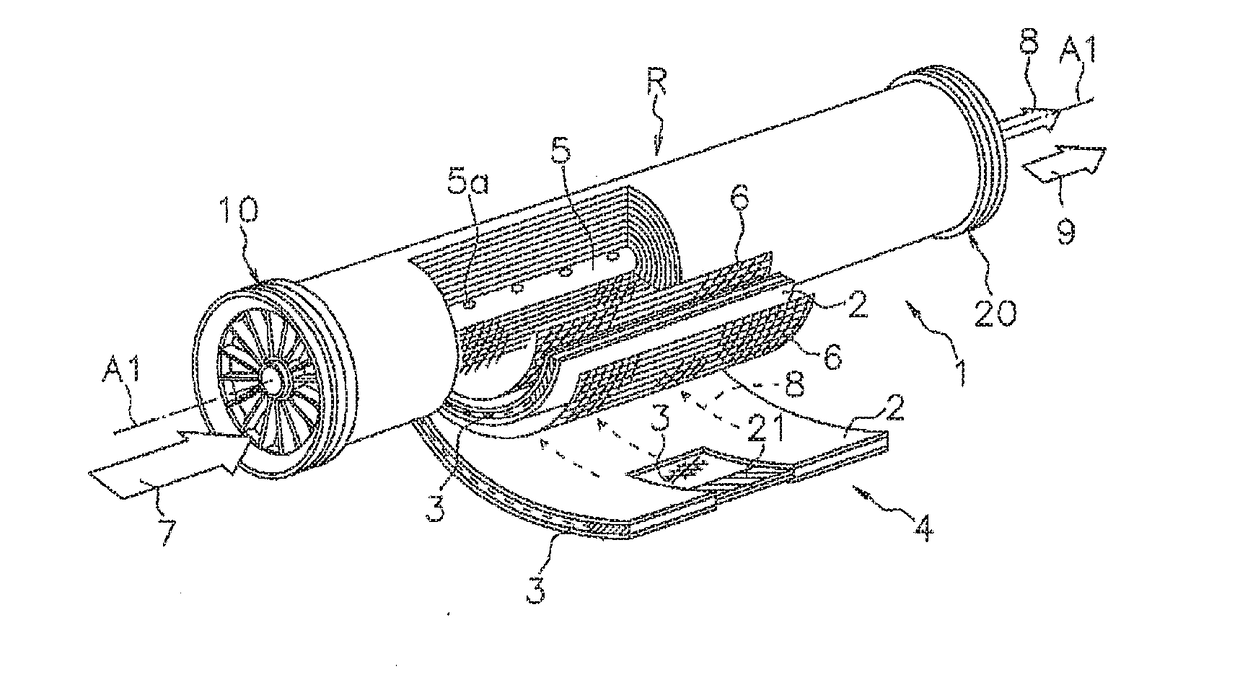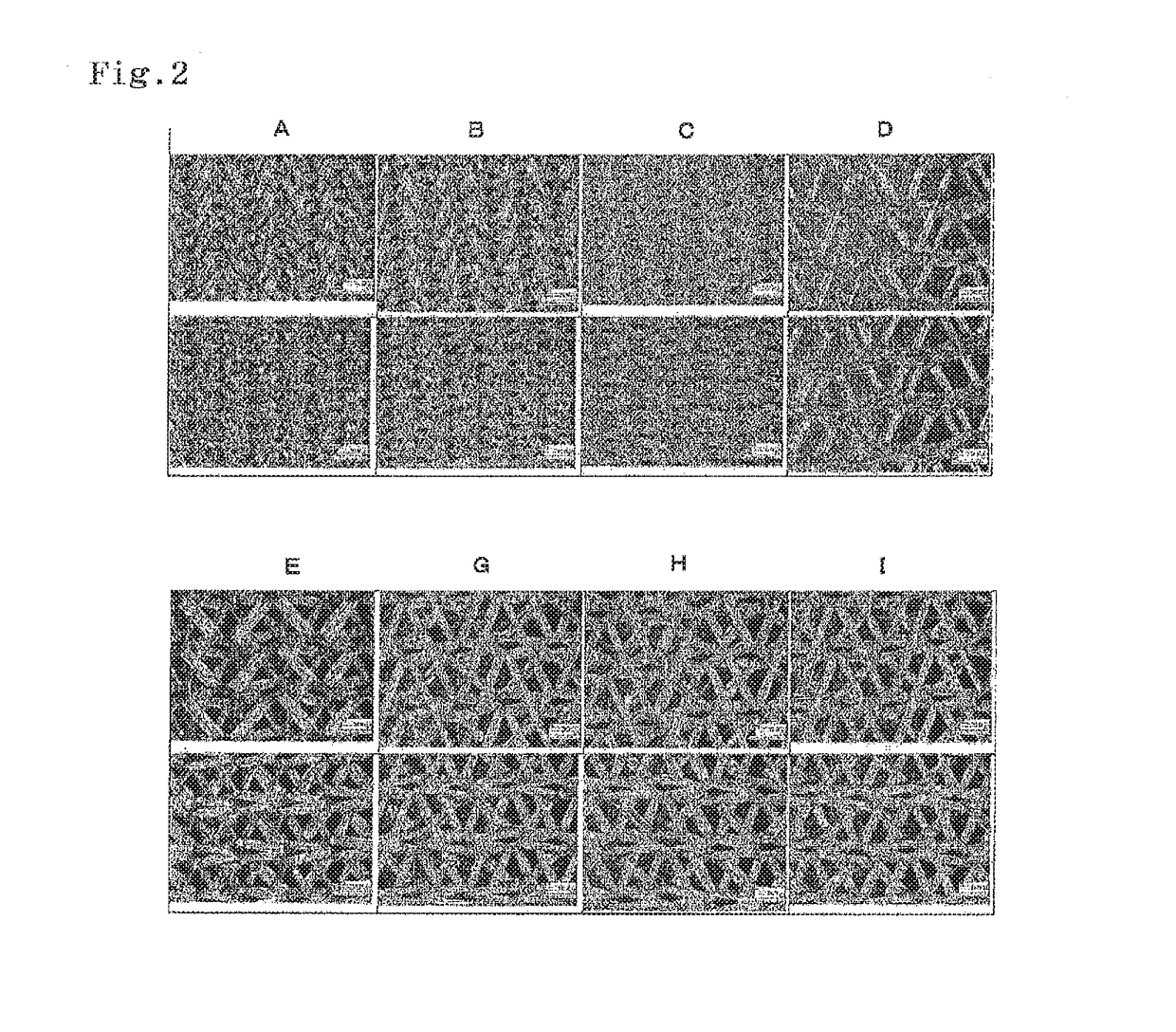Spiral membrane element
a membrane element and spiral technology, applied in the field of spiral membrane elements, can solve the problems of difficult to ensure water resources in a stable manner, and achieve the effects of increasing the effective membrane area, ensuring water resources stability, and increasing the permeation flow ra
- Summary
- Abstract
- Description
- Claims
- Application Information
AI Technical Summary
Benefits of technology
Problems solved by technology
Method used
Image
Examples
production example 1 (
Production of Composite Semi-Permeable Membrane)
[0073]A long porous support (90 μm thick) was prepared by a process including continuously applying a solution of a mixture of polysulfone and dimethylformamide (polymer concentration 18.35% by weight) to the surface of a 65-μm-thick commercially available polyester nonwoven cloth (about 1 m wide) for a water treatment membrane support, while feeding the cloth, and then subjecting the applied solution to a coagulation treatment in water at 35° C. to form a 25-μm-thick polymer porous layer.
[0074]A solution A containing a mixture of 3.6% by weight of piperazine hexahydrate and 0.15% by weight of sodium lauryl sulfate was brought into contact with the surface of the polymer porous layer of the porous support, while the porous support was fed, and then the excess solution A was removed, so that a solution A coating layer was formed. Subsequently, a solution B containing 0.4% by weight of trimesic acid chloride in a hexane solvent was broug...
production example 2 (
Production of Composite Semi-Permeable Membrane)
[0075]A long composite semi-permeable membrane was produced under the same conditions as those in Production Example 1, except that the nonwoven cloth used had a thickness of 90 μm, the polymer porous layer was formed with a thickness of 40 μm, and the porous support obtained had a thickness of 130 μm.
examples 1 to 5
[0076]The permeate flux and the rejection were evaluated by the above method using the permeation-side flow path materials A to E shown in Table 1 and FIG. 2 and the composite semi-permeable membrane obtained in Production Example 1. The results are also shown in Table 1. The results are further graphed and shown in FIGS. 3 and 4.
PUM
 Login to View More
Login to View More Abstract
Description
Claims
Application Information
 Login to View More
Login to View More - R&D
- Intellectual Property
- Life Sciences
- Materials
- Tech Scout
- Unparalleled Data Quality
- Higher Quality Content
- 60% Fewer Hallucinations
Browse by: Latest US Patents, China's latest patents, Technical Efficacy Thesaurus, Application Domain, Technology Topic, Popular Technical Reports.
© 2025 PatSnap. All rights reserved.Legal|Privacy policy|Modern Slavery Act Transparency Statement|Sitemap|About US| Contact US: help@patsnap.com



